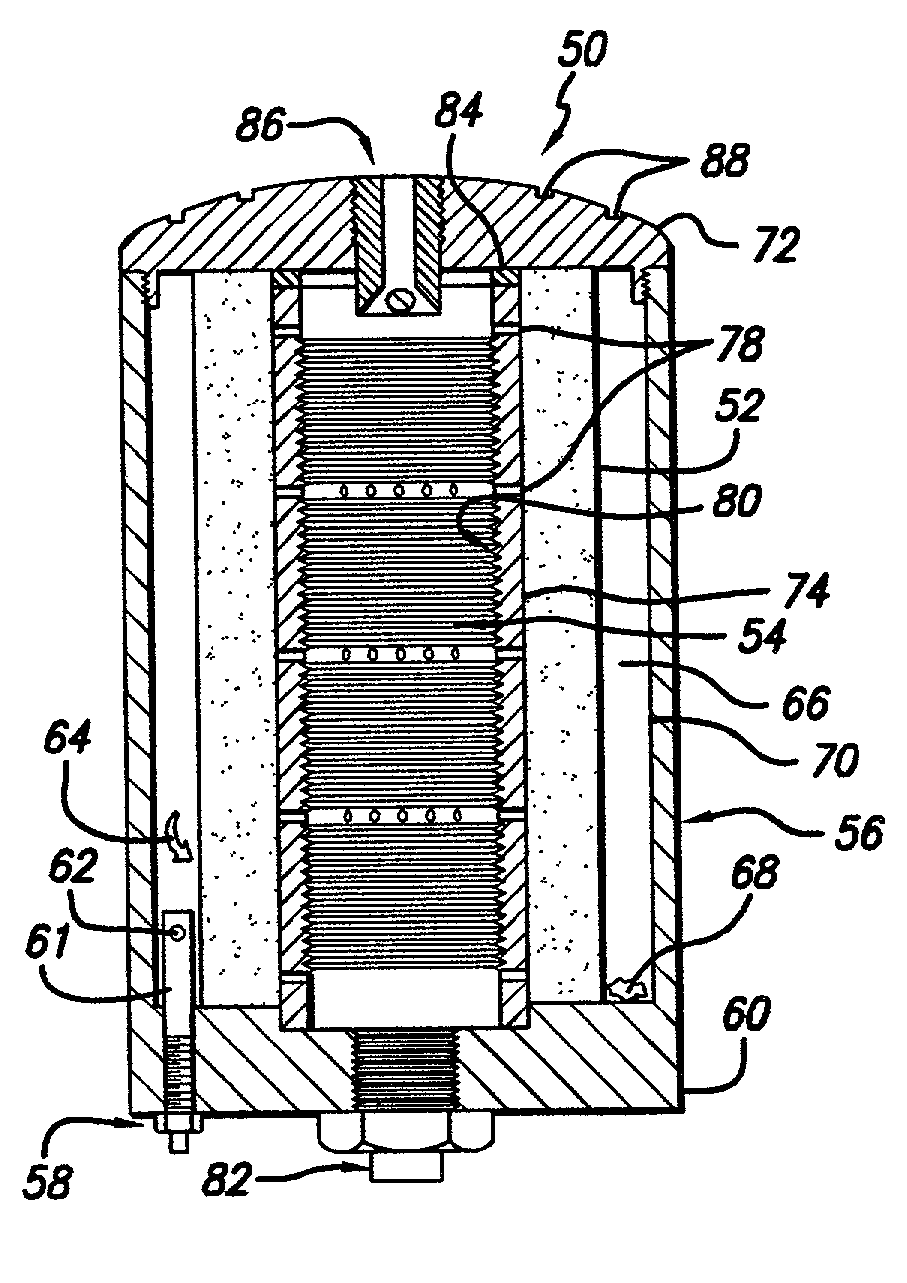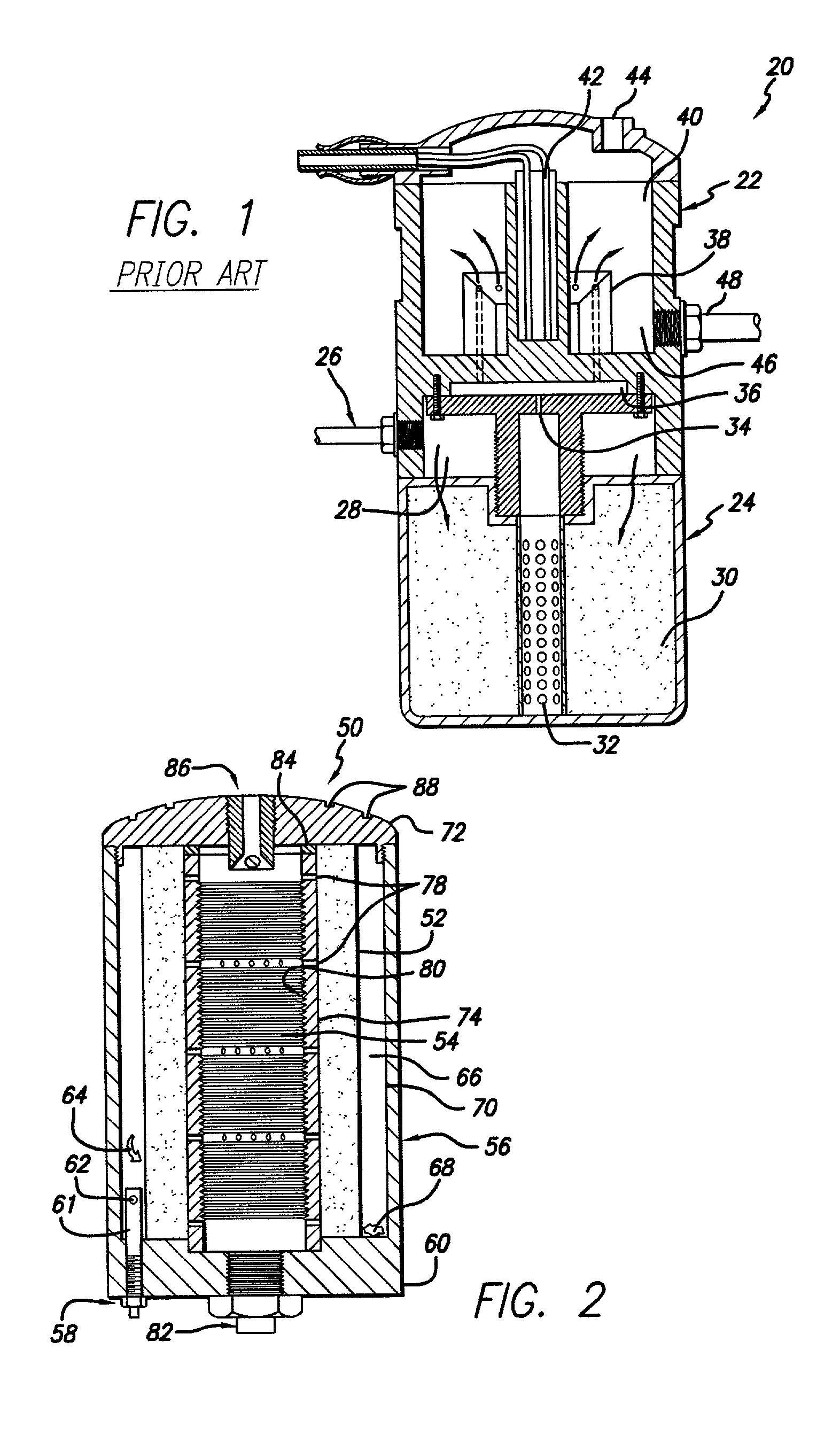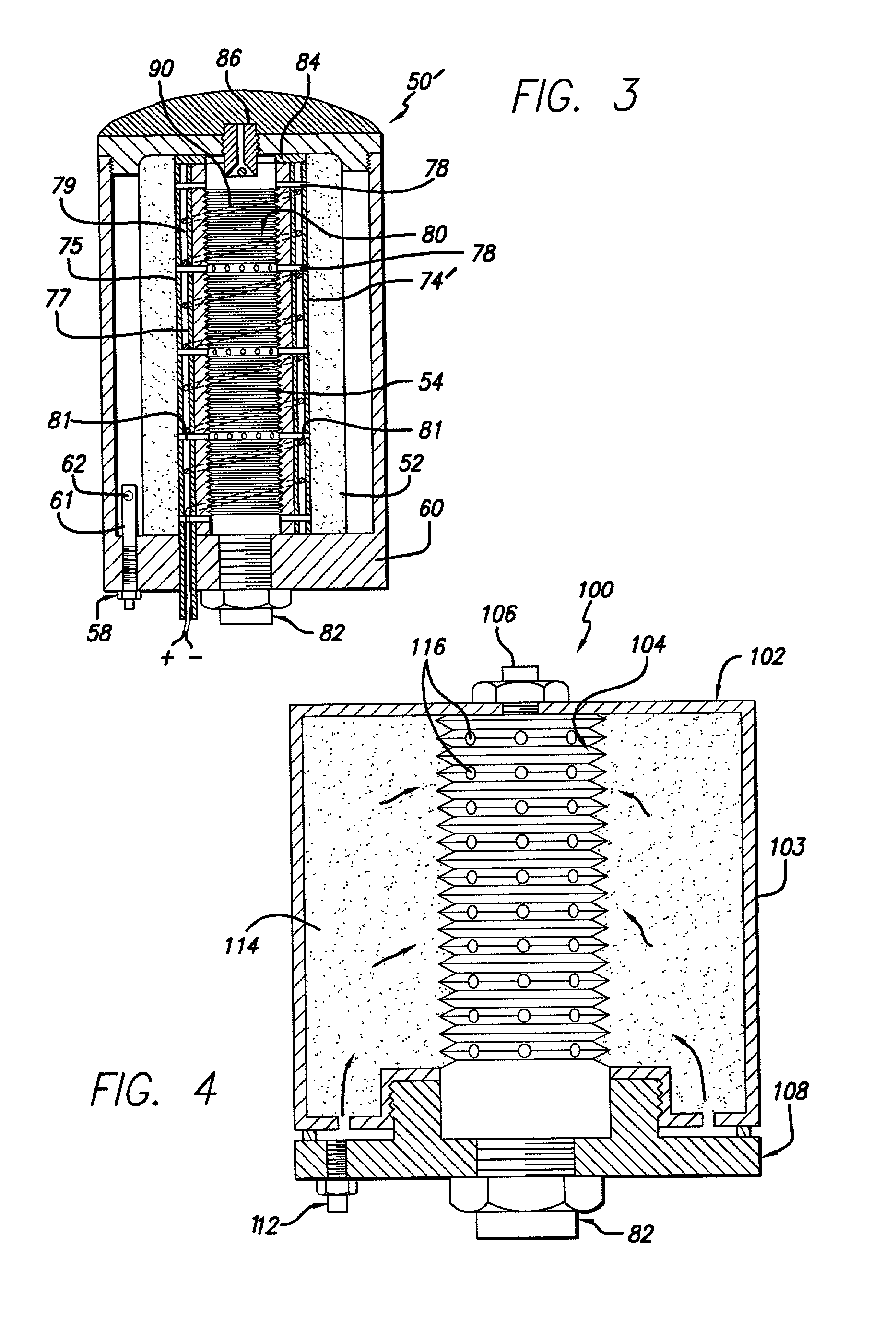Compact fluid cleaniing system
- Summary
- Abstract
- Description
- Claims
- Application Information
AI Technical Summary
Problems solved by technology
Method used
Image
Examples
embodiment 100
[0065] FIG. 4 is a cross-sectional view of an alternative embodiment 100 of the present invention including a spin-on filter 102 having a spin-on filter canister 103. The filter 102 is a filter of conventional design with the exception that the filter 102 includes a special interior surface 104 and a vapor vent 106. By employing off-the-shelf parts, implementation of the system 100 is greatly facilitated.
[0066] The filter 102 is screwed onto a base plate 108 that includes an oil outlet 82 and an oil inlet 112. Pressurized oil from an engine (not shown) enters the filter 102 through a base plate 108 and space between the base plate 108 and the base of the filter. Oil passes through a filtering element 114 included in the filter 102 where solid contaminants are removed, and some liquid contaminants are absorbed and / or neutralized. The pressurized oil, free of solid contaminants, is released to atmospheric pressure as it passes through the special surface 104 via small holes 116. The h...
embodiment 120
[0067] FIG. 5 is a cross-sectional view of an illustrative embodiment 120 of the present invention adapted for use with a conventional spin-on filter 122. The illustrative embodiment 120 includes a plate 124, and an evaporation attachment 126. The attachment 126 is a tube having a textured inside surface 128 with holes 130 and is screwed into the plate 124. Oil cleaned by the filter 102 may flow through the holes 130 and over a top 132 of the evaporation attachment 126. Those skilled in the art will appreciate that oil flow may be prevented from flowing over the top 132 without departing from the scope of the present invention.
[0068] The operation of the illustrative embodiment 120 is analogous to the operation of the alternative embodiment of FIG. 4 with the exception that vapors vaporized form the surface 128 may exit through the plate 124 instead of the top of the filter 120. The plate 124 has a vapor outlet 134. A vapor tube 136 extends from the vapor outlet 134 and opens into t...
embodiment 150
[0069] FIG. 6 is a cross-sectional view of a second alternative embodiment 150 of the present invention. The system 150 includes a filter 152 surrounded by an expanded evaporation surface 156.
[0070] Heated, pressurized oil enters the system 50 via an oil inlet 112'. Oil flows through the filter 152 and onto the evaporation surface 156 via the small holes 116'. Oil passing through the holes 116' is released to atmospheric pressure, facilitating the vaporization of contaminants from the oil on the surface 156. Vapors are vented through a vent aperture 158, and clean oil drains back to the engine (not shown) via an oil outlet 82. A groove 160 varies in depth around the circumference of the system 50, helping to direct oil to the oil outlet 82, and preventing oil coagulation in the groove 160.
PUM
| Property | Measurement | Unit |
|---|---|---|
| Fraction | aaaaa | aaaaa |
| Pressure | aaaaa | aaaaa |
| Angle | aaaaa | aaaaa |
Abstract
Description
Claims
Application Information
 Login to View More
Login to View More - R&D
- Intellectual Property
- Life Sciences
- Materials
- Tech Scout
- Unparalleled Data Quality
- Higher Quality Content
- 60% Fewer Hallucinations
Browse by: Latest US Patents, China's latest patents, Technical Efficacy Thesaurus, Application Domain, Technology Topic, Popular Technical Reports.
© 2025 PatSnap. All rights reserved.Legal|Privacy policy|Modern Slavery Act Transparency Statement|Sitemap|About US| Contact US: help@patsnap.com



